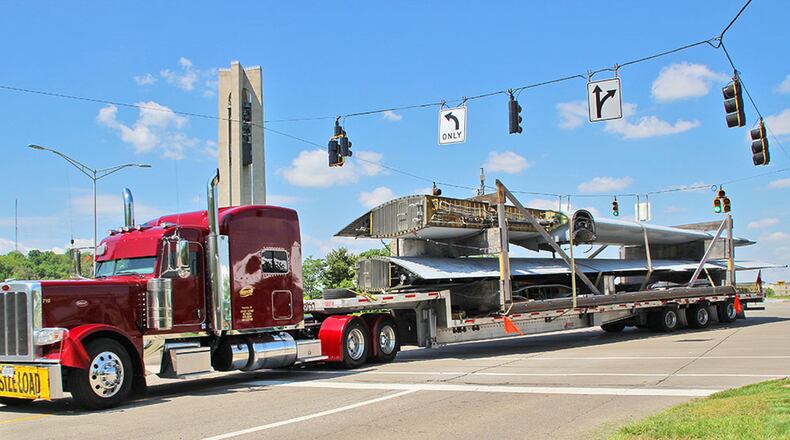UD’s Daniel J. Curran Place, formerly River Campus, is relatively private and secure and a good place for the project, she said.
“It is confined,” Naguy said in an interview this week as the fuselage of a old C-130 from Eglin Air Force Base arrived on a flatbed trailer, a 760-mile trip. “You can’t get in here on the weekends, the gates are closed.”
This is an edited transcript of an interview with Naguy.
Question: What kind of answers will your research here produce?
Naguy: "We're leveraging new technologies. So robotics, even lasers, to de-paint under the aircraft. It's like a 3M tape that actually protects the belly (of the plane) when it lands on runways that are not improved runways. So all those stones hit the belly, and they actually damage it. When it goes down to Warner-Robins (Air Force Base), they have to spend a lot of man-hours to take the belly tape off. You take the coating off, the paint, to inspect for corrosion. …
“We’re looking at designing a robot — it’s actually going to be demonstrated on this aircraft right here — where it’s going to go underneath the belly, and it will have a laser to actually ablate the belly tape off and ablate the coating off.”
Q: Will that robot will be built here in Dayton?
Naguy: "Yes. Then when we're done with it, the robot will get sent down to Warner-Robins and will be used in production to help them take the belly tape off."
Q: Is sharing this research with UD only costing $100,000?
Naguy: That is for the transportation (of the plane) and the pad (in the UD parking lot). We have seven or eight different efforts associated with this. That robot de-paint is actually a congressional add (a budget item) to the Air Force. We are getting ready to send out proposals to look for companies to bid on it. I'm not sure what their costs will come back as."
Q: Will you be using 3-D printing here, as well?
Naguy: "We're using that to help us address some diminishing manufacturing and obsolescence issues. One of our big concerns and challenges in the Air Force is taking old 2-D drawings that are paper-based and converting them into a 3-D digital drawing.
“So the first thing we’re going to do is use some student hires over the summer to come in and start scanning parts and helping the Air Force figure out how we quickly translate from a 2-D drawing into 3-D digital drawings. They’re going to actually scan with hand(-held) lasers, they’ll be going inside, and we’ll be taking the parts off.”
Q: Is this the first time the Air Force has physically moved an older plane to a university like this?
Naguy: "I do not know of any other incidents like this. This is great because it's right here where my engineers in the office are working side-by-side with engineers down here at the University of Dayton Research Institute. It's a collaborative effort."
Q: What else will you do here?
Naguy: "The worst thing in the Air Force is to have a crack and to have a catastrophic failure because we have a crack. That's a big thing with our old aircraft.
“We’re looking at using drones to go up, fly around and inspect these aircraft for cracks. Then we’ll download our data and use artificial intelligence to compile all the data to have a better understanding of crack growth.”
About the Author

